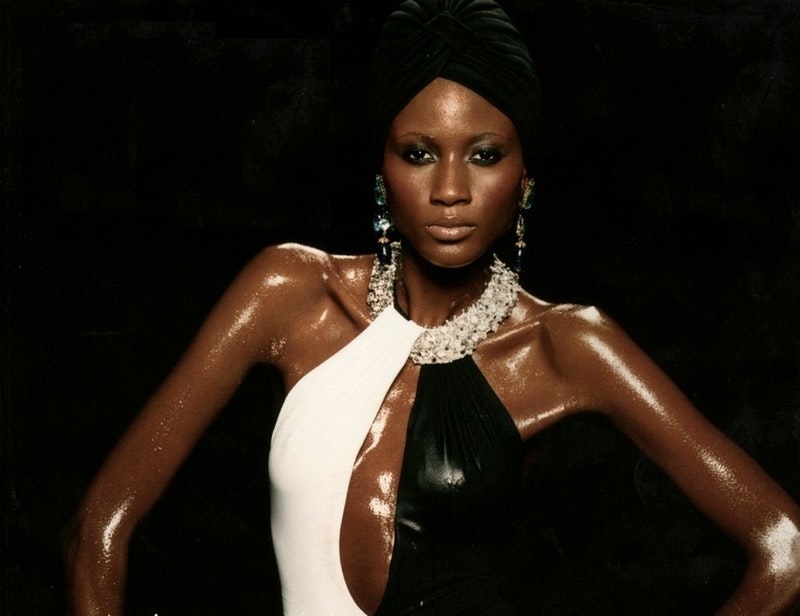Department of English
_________ University
SUPERMODELS AND POPULAR CULTURE
Fall 2011
3:00PM-5:40 p.m. | Blacklow Academic Center| Room 913
Professor Madison Moore
Email: madison@someuniversity.edu
Office: 69 Cole Mohr Hall
Phone: 212-627-7222
Appointment Hours: MW 3-5pm
Course Description
This bitchy, undergraduate seminar explores the world of high fashion modeling as a site to interrogate the cultural politics of race, beauty, and gender. We will also be turning you into supermodels, so everybody start practicing your smizes. Focusing on the period from 1960 to the present, this interactive, creative, interdisciplinary seminar examines supermodels and the world of high fashion as a site of performance, beauty, and cultural politics. Questions we will explore include: How did fashion modeling shift from a poorly received profession likened to prostitution to one that now provides Hollywood celebrity—and tons of free swag? How many weaves has Naomi Campbell actually had? What do the insides of Kate Moss’ nostrils really look like? What are the politics of race in the fashion industry? How do models represent changing ideals of beauty, sex appeal, and gender? Does Freja top or bottom for Arizona Muse? In what ways are fashion modeling and fashion photography related to performance? Why are queers and gay dudes the ones running the whole fashion industry? How do models have sex with each other? At the end of this course, students will have a sharpened understanding of fashion and supermodels as part of a billion dollar industry that reflects and shapes anxieties of race, gender, and beauty.
The class will be rigorously pre-screened on the first day—kind of like a go-see. Guys must be six feet or taller, girls should be five feet 10 inches or more. Be sure your portfolio includes different looks and styles, including head shots as well as shots of you giving head. Tyra and a panel of judges nobody has ever heard of will scrutinize your book.
Required Materials
Harold Koda and Kohle Yohannan, The Model As Muse: Embodying Fashion (New Haven: Yale University press, 2009).
madison moore, The Better You Look, The More You See: How Models, Glamazons, and Other Fabulous People Rule the World—And What You Can Do to Join Them (New York: A Major Publishing House, 2015).
Wendy Steiner, The Real Real Thing: The Model in the Mirror of Art (Chicago: University of Chicago Press, 2010).
Creative Final Project
Design Your Own Magazine/Editorial (Part 1): You will work together in teams of five to create your own fashion magazine prototypes. No white people on the covers of your magazines though, okay? I think we’ve seen enough of that already. Come up with a name for your magazine, lay out the cover with full article titles, and shoot both the cover and a four page editorial fashion spread. Don’t be boring! The editorial spread can be anything you can imagine, and you may shoot it anywhere in the city. Don’t. Bore. Nina.
Presentation (Part 2): In the form of a presentation during the last two weeks of class, your groups will each give a 15-minute talk presenting your magazines to the class. Talk us through how you came up with the looks and present us the main argument of your research paper. But most importantly we want to know who you think will win America’s Next Top Model. Winning guess gets an A+, an outstanding letter of recommendation, a name drop at an internship of your choice, and a bottle of coconut water!
Eight-page paper (Part 3): To augment this creative project, you will each individually write an 8-page paper justifying your work. And don’t just type “Dadadaadada” for eight pages, either. That got really boring after the third time. What aspects of the body, beauty, race, gender or sexuality does your cover and editorial spread address? You must use some of the theorists we’ve spoken about this term to bolster your argument, especially my book.
Course Outline
Week 1: Course Introduction. Ugly People Asked to Leave the Room, in Preparation for Week 2
Week 2: Survival of the Prettiest: Beauty Culture in America
Week 3: Wilhelmina, Ford, Next: No, You Can’t Be A Model, and Here’s Why.
Week 4: Fabulous Work—If You Can Get It: All Models Do Is Party and Get Paid for It.
Week 5: Smile With Your Eyes: Isn’t This Term Played Out?
Week 6: Changing Visions of Masculinity on the Catwalk, Or, Boys Love to Mime Sex With Each Other in Fashion Editorials
Week 9: Go See: Model Casting and the Cataloguing of Identity
Week 7: Camera Technologies and the Matter of Whiteness. Why Are There So Many Fucking White People?
Week 8: Tyra, Naomi, Alek: A Black Issue
Week 10: Work!: Fashion Shows and Performance. Trannies and Drag Queens Take the Catwalk!
Week 11: Models in Contemporary Art
Week 12: “Tyra Banks Is Fat”: Models and Image Issues
Week 13: The Supermodel Era
Week 14: Student Presentations

